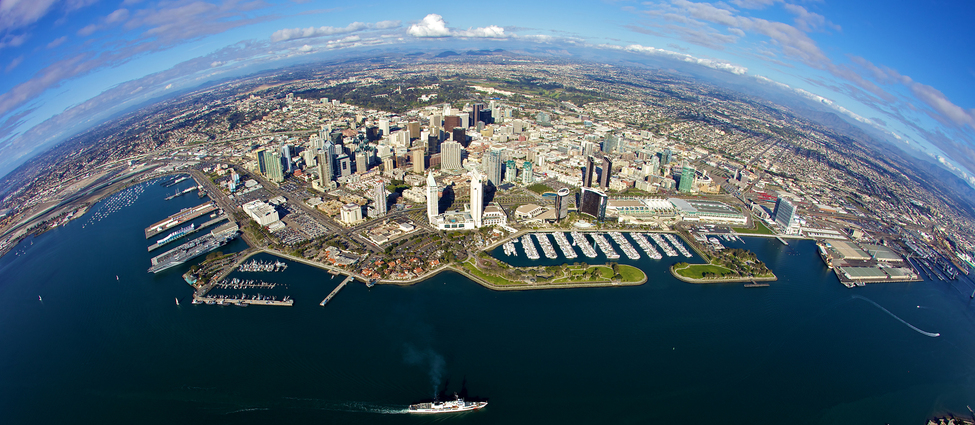

News

Port of SD Releases Blue Economy Highlights Report
The Port of San Diego has released the third edition of its Blue Economy Incubator Highlights Report, which outlines the performance of each project based on measurable, key performance indicators that are linked to environmental, social, and financial benefits and delivered by the companies in the portfolio, from pilot project to commercial success.
As a catalyst for the region’s Blue Economy, the Port of San Diego established its Blue Economy Incubator in 2016 as a launching pad for sustainable aquaculture and Port-related blue technology ventures. To date, the Board of Port Commissioners has approved nine agreements with early-stage companies to launch innovative pilot projects.
“It’s remarkable to see how much has been achieved since starting the program,” said Chairman Dan Malcolm, Board of Port Commissioners. “Through the Blue Economy Incubator, the Port of San Diego has received global attention and recognition as a leader in the Blue Economy and will continue to pave the way for new projects that protect and preserve precious resources not just here locally but all over the world”.
The Port of San Diego is committed to foster the development of a sustainable ocean economy and to explore new opportunities that deliver multiple social, environmental, and economic co-benefits to the Port and the region. In exchange for funding or in-kind support provided to launch the nine pilot projects, the Port receives a royalty from the businesses’ operations or technology. To date, the Port has committed $1.6 million in funding and has attracted an additional $1.2 million in outside funding for blue economy initiatives, provided access and use of Port-owned property, assisted with obtaining all necessary regulatory and operational permits, coordinated the installation of pilot projects, and collaborated on marketing and communications.
Here is our impact in numbers so far:
- Over 250 inquiries from organizations seeking partnership and pilot project opportunities
- Over 25 partnerships created
- 9 innovative projects launched
- 20 million juvenile oysters expected to be produced annually when San Diego Bay Aquaculture’s FLUPSY is at full capacity.
- 110,000 pounds of marine debris removed, including 33,000 pounds of marine debris removed from San Diego Bay by Zephyr during the one-year pilot and then an additional 77,000 pounds were removed through an add-on contract with the Port.
- 468 SPEARS units of SPEARS technology deployed into the bay sediment by ecoSPEARS to demonstrate their innovative approach to sediment and soil remediation in port environments.
- 58 different species found living on ECOncrete’s bio-enhancing shoreline protection armor units just eight months after deployment
- 6 different algae species tested at the seaweed aquaculture pilot farm established by Sunken Seaweed to launch various products and measure restoration benefits
- 3 control cleaning events and concurrent water quality sampling events to evaluate release of copper from boat hulls using Rentunder Boatwash technology
The latest report includes pilot project overviews, highlights, and current status updates of the various projects.
Program highlights/current status:
- ECOncrete: In January 2021, ECOncrete installed its COASTALOCK interlocking tide pools at two locations on Harbor Island. The tide pools are made with an environmentally sensitive, low carbon concrete mixture tailored to the San Diego Bay marine environment. The COASTALOCK tide pool is designed to interlock with other COASTALOCK tide pools to create a tide pool system, potentially serving as a replacement for the traditional riprap to provide ecological armoring and shoreline stabilization while also creating well-defined local ecosystems that mimic natural tide pools. Data are still being compiled but what is being observed is promising. The species composition continues to grow towards a richer, diverse, and natural community with a lower ratio of invasive to native species among the COASTALOCK units compared to traditional rip rap. Most recently this project was recognized by the San Diego Section of the American Society of Civil Engineers (ASCE) and awarded the 2022 ‘Outstanding Airports and Ports Project’ award.
- ecoSPEARS: In 2020, ecoSPEARS deployed its SPEARS technology at Harbor Island and America’s Cup Harbor in San Diego Bay to test a unique cleanup solution to extract toxic contaminants from impacted marine sediment. After 12 months of deployment, 1/3 of the SPEARS were retrieved for preliminary data collection to measure the mass of contaminants removed from the marine sediment compared to baseline conditions. Similar tests will occur in late 2022 and the results will be used by ecoSPEARS to validate its remediation technology and to pursue scaling opportunities.
- FREDsense: In 2020, FREDsense partnered with the Port to develop a portable five-in-one field-testing sensor device to provide real-time metals analysis during stormwater monitoring. FREDsense will create a prototype and test the sensor device. FREDsense has successfully validated the chemistry tests and has begun work on initial testing units for eventual field testing. Results from the pilot will allow for case study development in preparation for full commercialization and regulatory approval.
Throughout the program, the Port has received multiple awards recognizing its unique approach to Port-based Blue Economy innovation through pilot project facilitation and has been recognized by state and federal agencies, industry, and academia for providing pathways for the sustainable development of aquaculture in the region. Learn more about the Port of San Diego’s Blue Economy Incubator and read the full report at portofsandiego.org/blueeconomy.